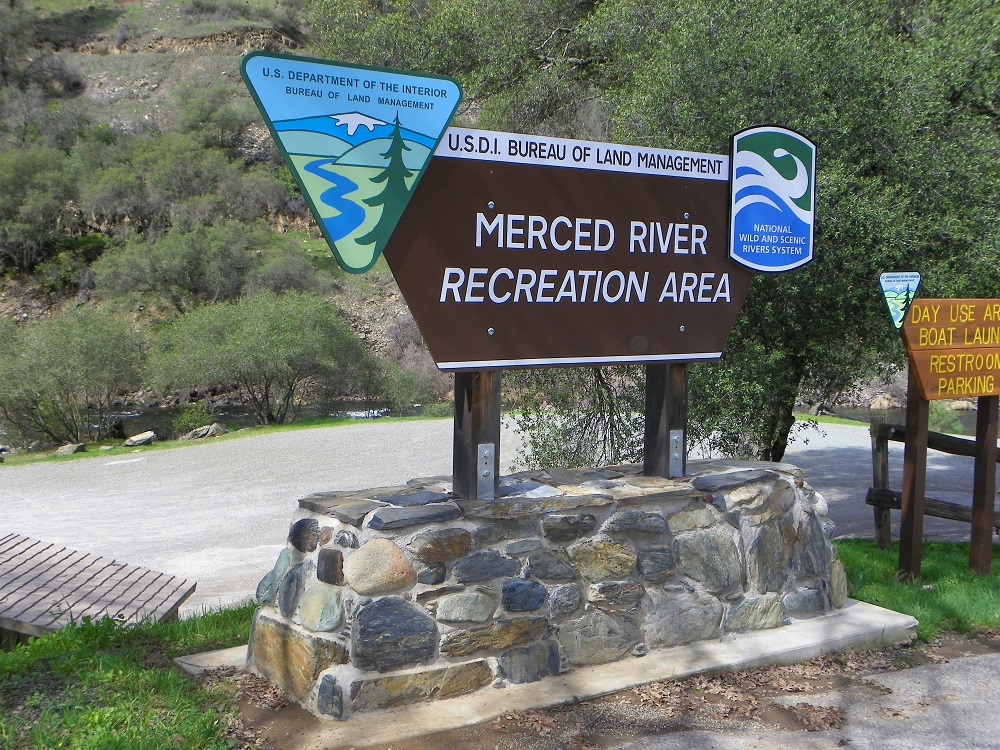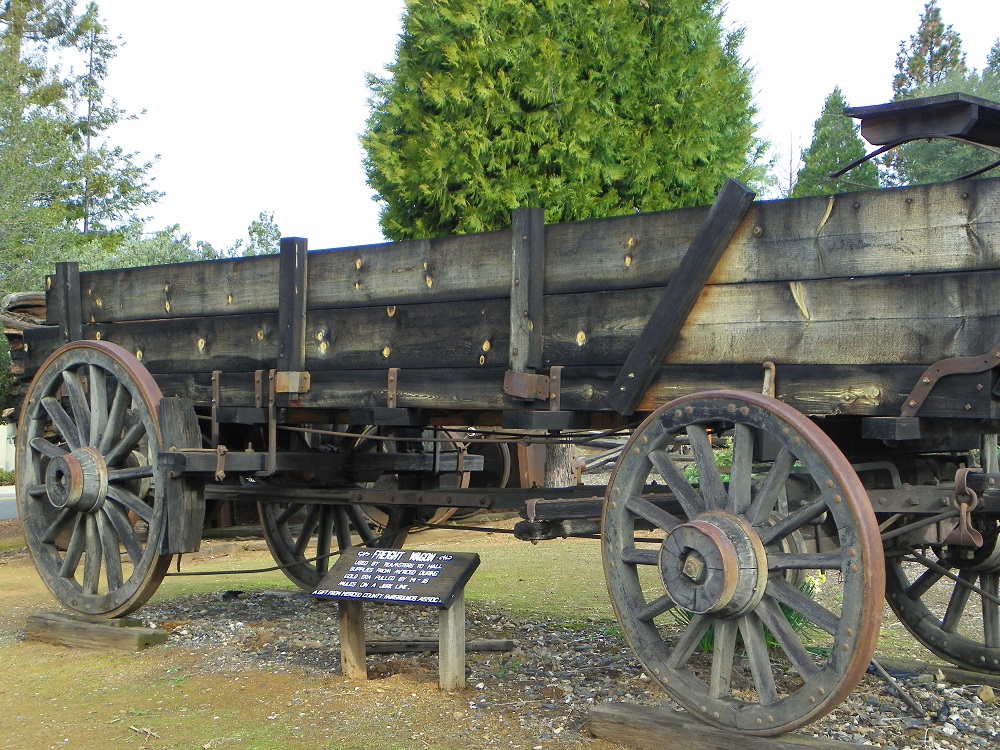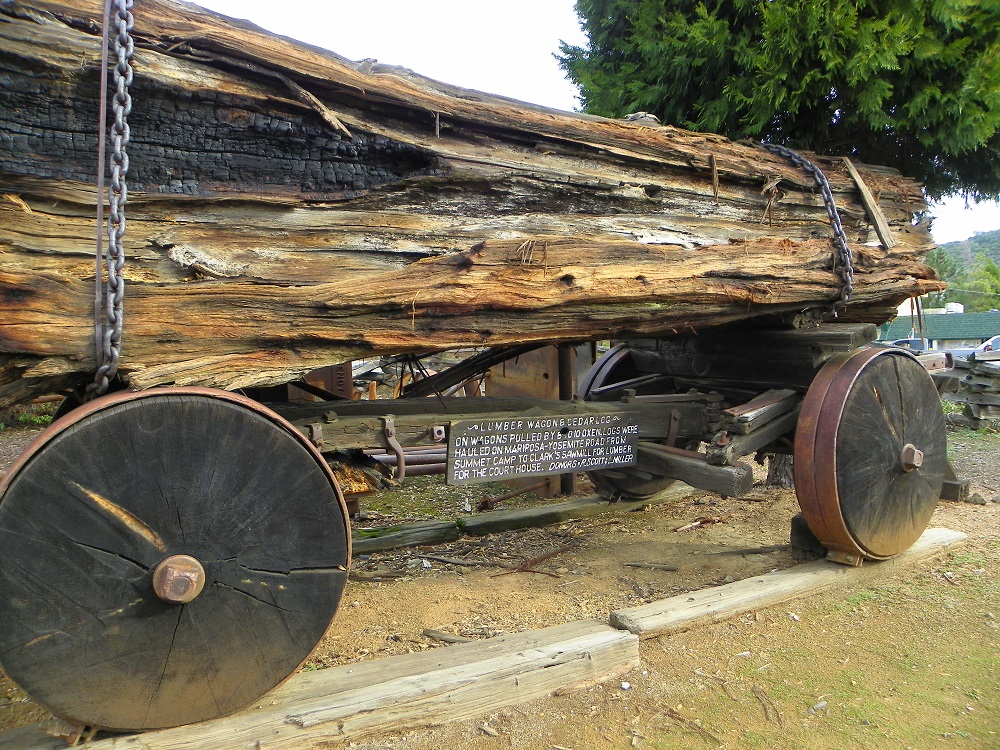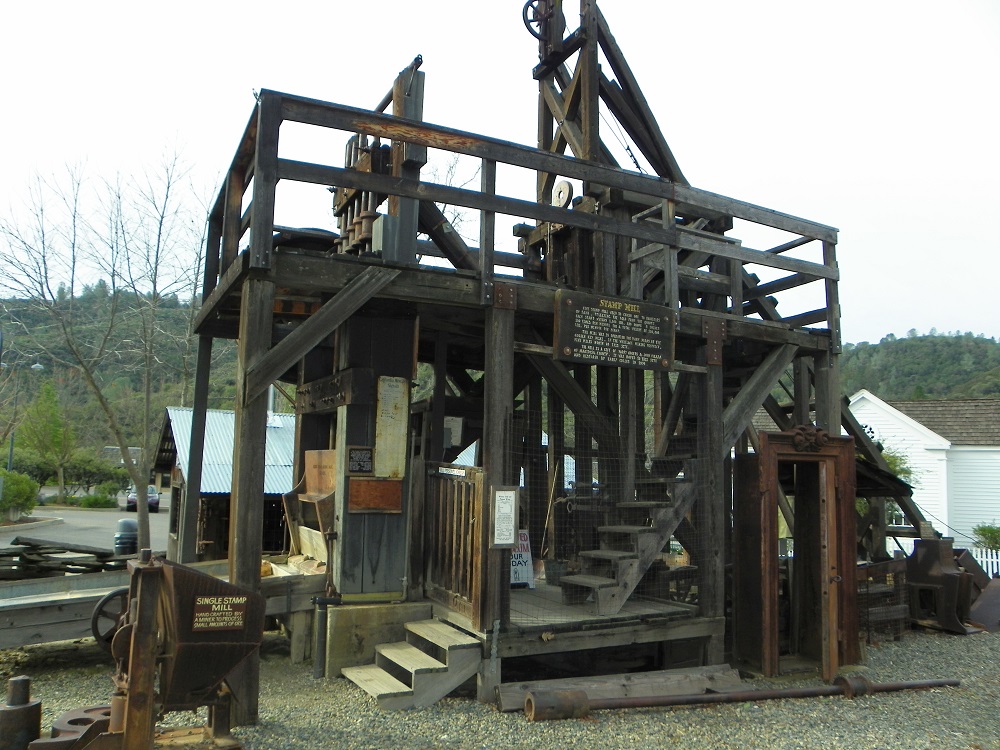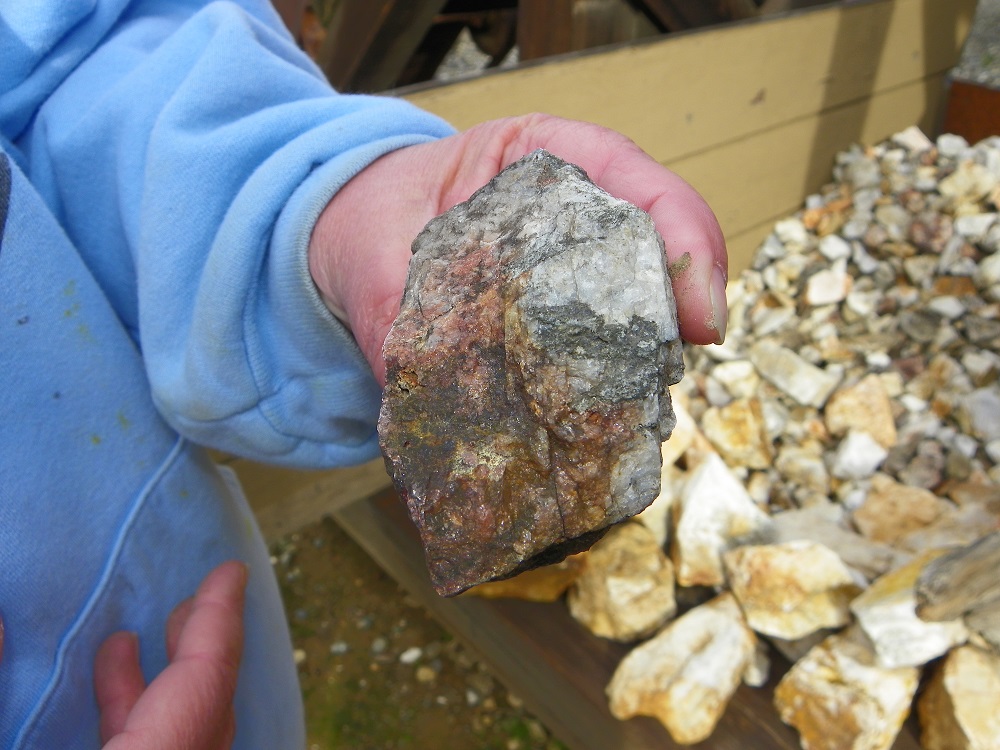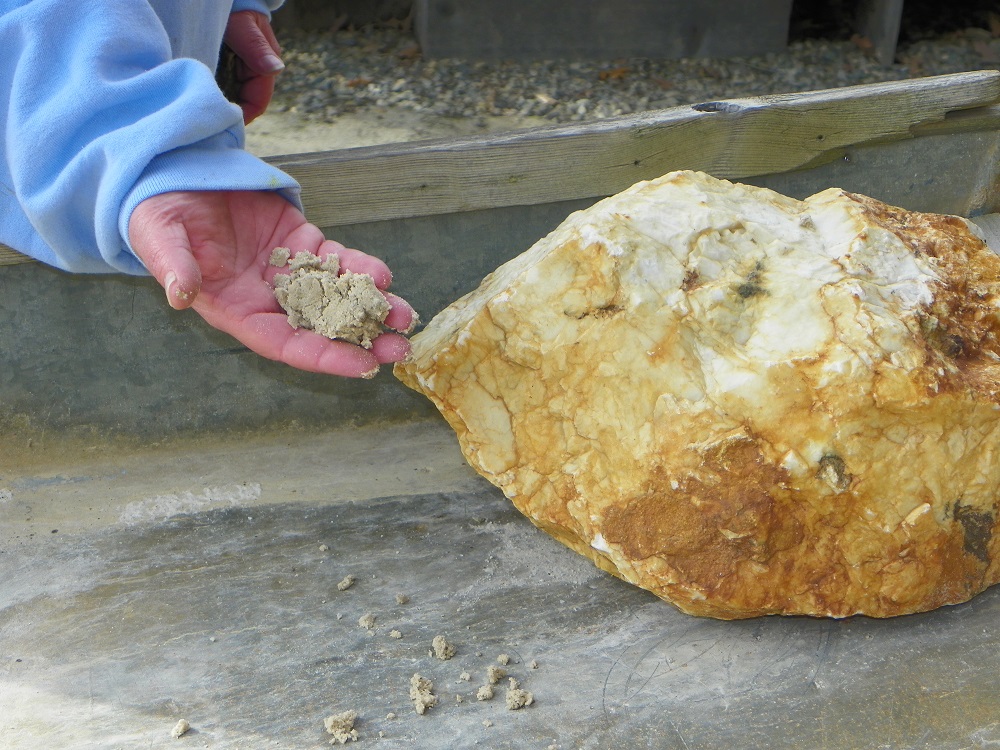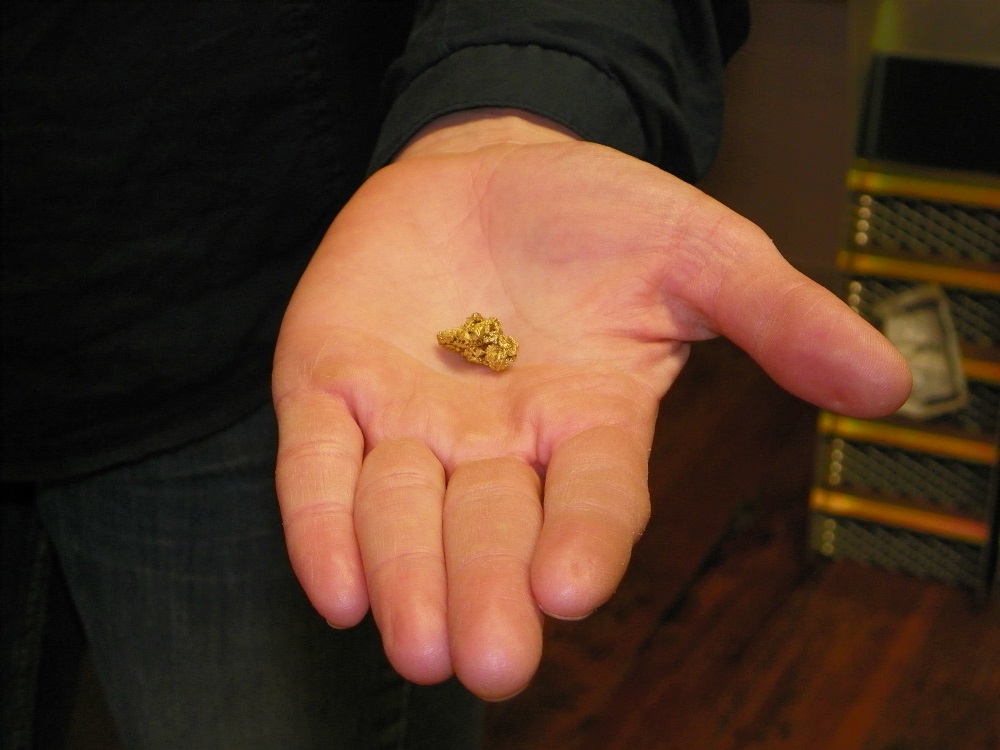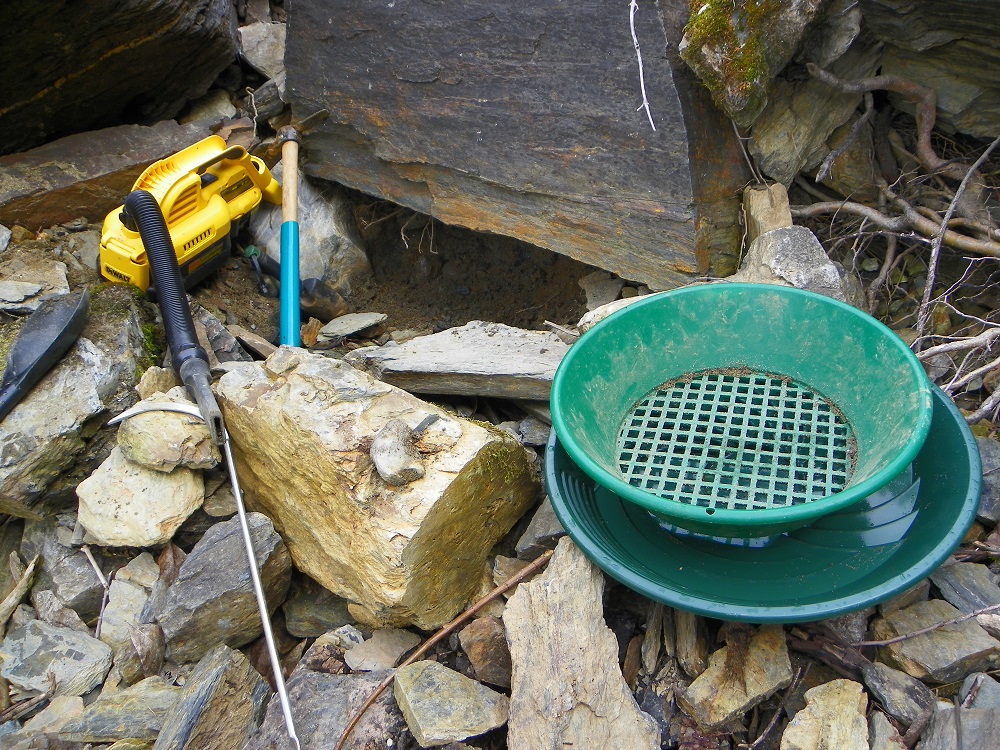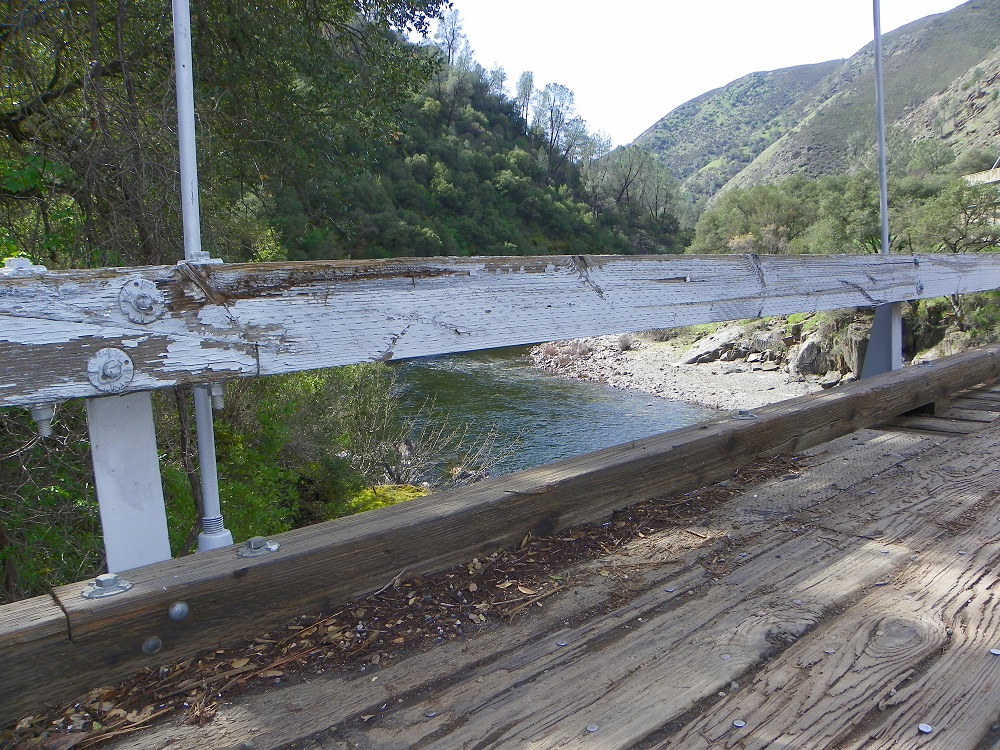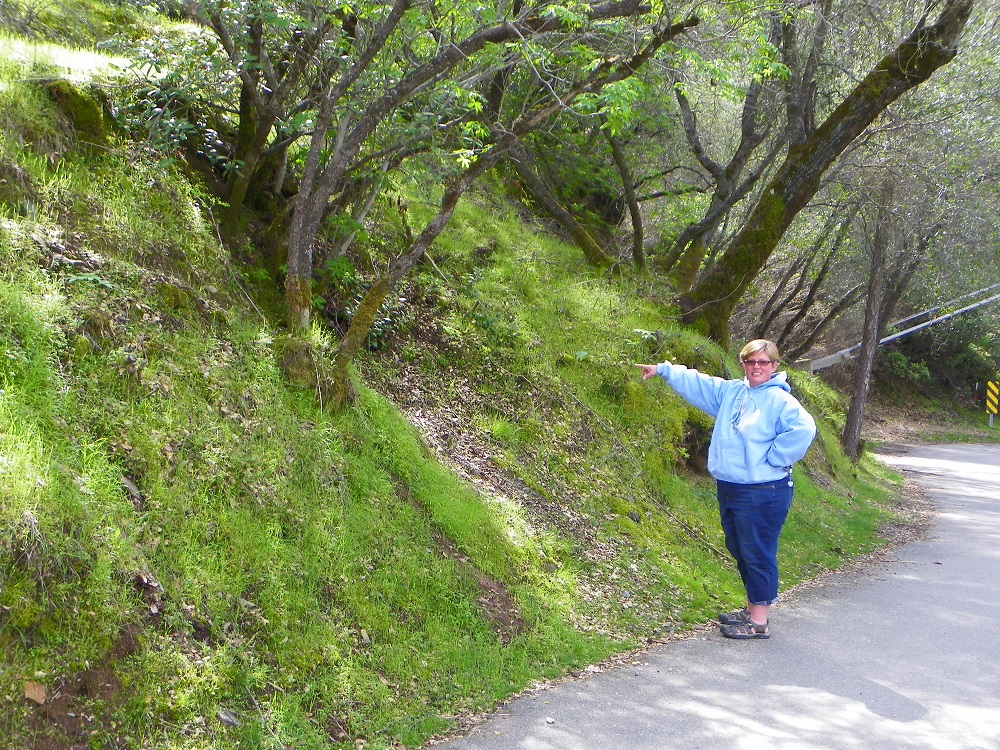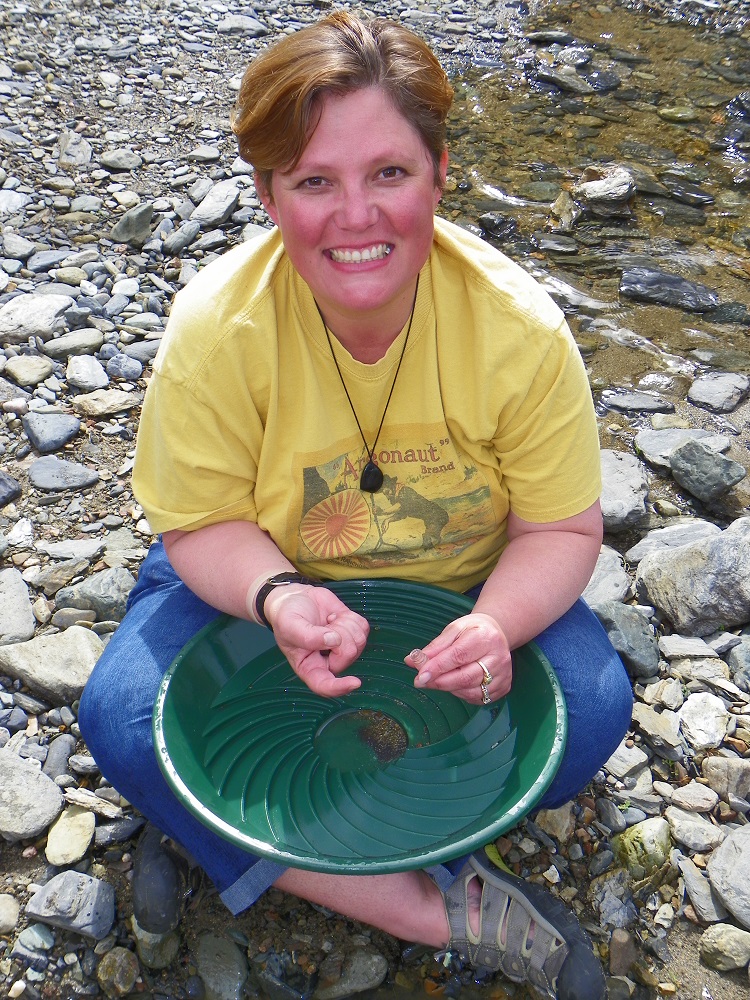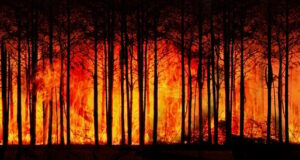MARIPOSA – When a California Gold Country couple found a stash of pristine old coins while dog-walking on their nearly bankrupt property, word spread faster than they could say “Eureka!”
Dubbed the “Saddle Ridge Hoard” for the space on the couple’s land where the dirt-crusted fortune was accidentally discovered in rusty cans, experts estimate the find to be the most valuable cache ever stumbled upon, dug up or possibly ever dreamed of in North America. It’s said to be valued at more than $10 million.
News of that unforeseen fortune got me thinking about my friend Tamara, who’s been prospecting and mining with increasing devotion for seven or eight years.
Searching for gold is a family affair for Tamara, something she does with her husband and daughter, and a posse of mining friends. Tamara had offered to take me out looking for gold “anytime,” so in the spirit of adventure she loaded up her 4×4 with prospecting equipment and we took off up historic Highway 49 from Oakhurst, toward Mariposa.
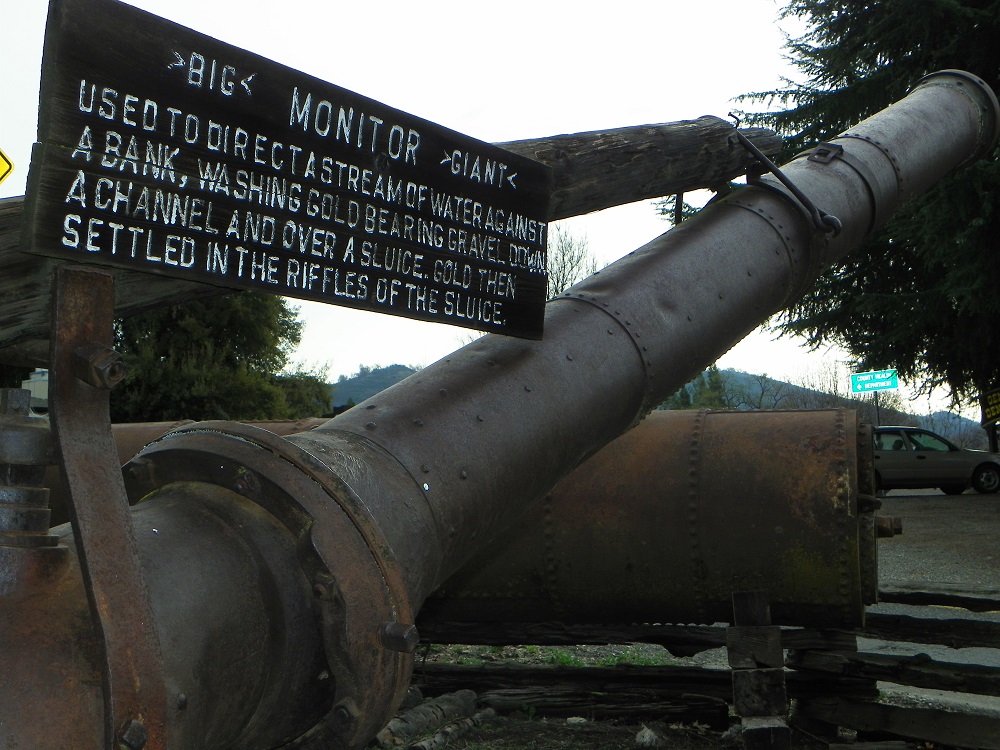 The first thing Tam explained was the multiple long scratches running lengthwise in the paint on both sides of her truck. She called them “Mariposa pinstripes,” the result of off-roading near Manzanita branches in gold country. For some, my friend included, they’re considered a badge of honor.
The first thing Tam explained was the multiple long scratches running lengthwise in the paint on both sides of her truck. She called them “Mariposa pinstripes,” the result of off-roading near Manzanita branches in gold country. For some, my friend included, they’re considered a badge of honor.
Along Highway 49, Tam talked about the history and geology of the foothills, as we passed old mining towns including Grub Gulch and Mormon Bar. These towns were once thriving, thick with immigrants and other seekers – dubbed the “49ers” – who’d come to find their fortune in the foothills of California at the onslaught of the gold rush in 1849.
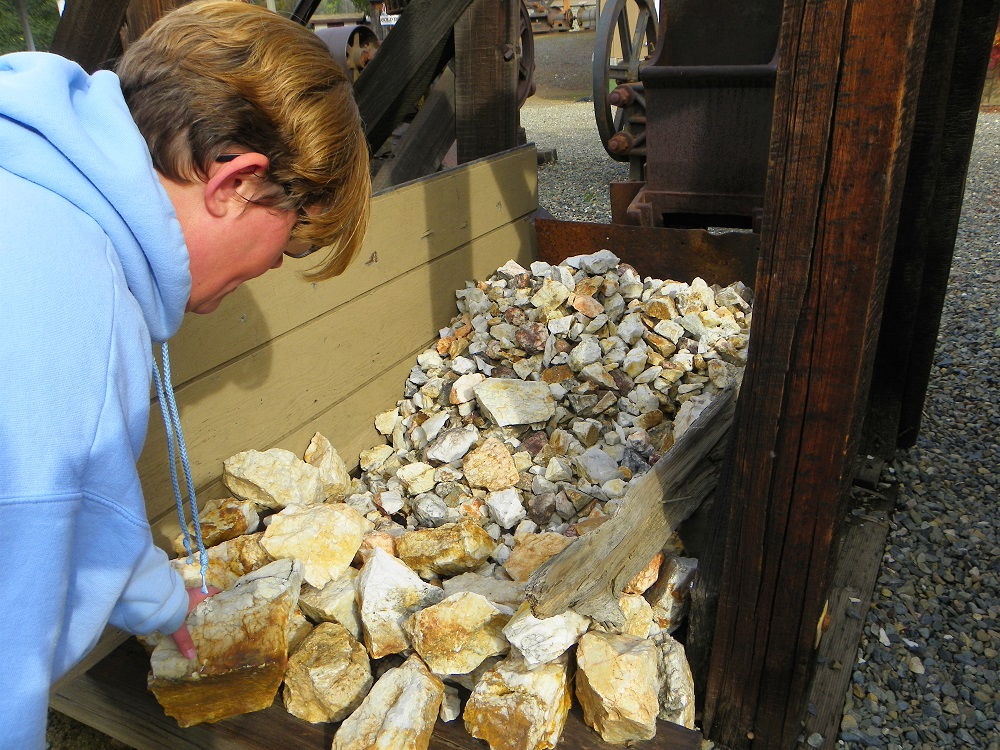 At this writing, gold is selling for over $1,300 an ounce. Some experts believe that an astonishing 70 – 80% of California’s premiere ore remains untapped in the Mother Lode, that rich vein of gold-bearing rock beneath Highway 49. The Mother Lode runs from Nevada City to Mariposa, our ultimate destination.
At this writing, gold is selling for over $1,300 an ounce. Some experts believe that an astonishing 70 – 80% of California’s premiere ore remains untapped in the Mother Lode, that rich vein of gold-bearing rock beneath Highway 49. The Mother Lode runs from Nevada City to Mariposa, our ultimate destination.
Once in town, we stopped at the Mariposa Museum & History Center for a review of authentic mining-era memorabilia that’s permanently housed outside and around the building. A massive water-cannon called Big Giant was once used to direct a punishing stream of water against a bank, washing gold and gravel down a channel and over a sluice.
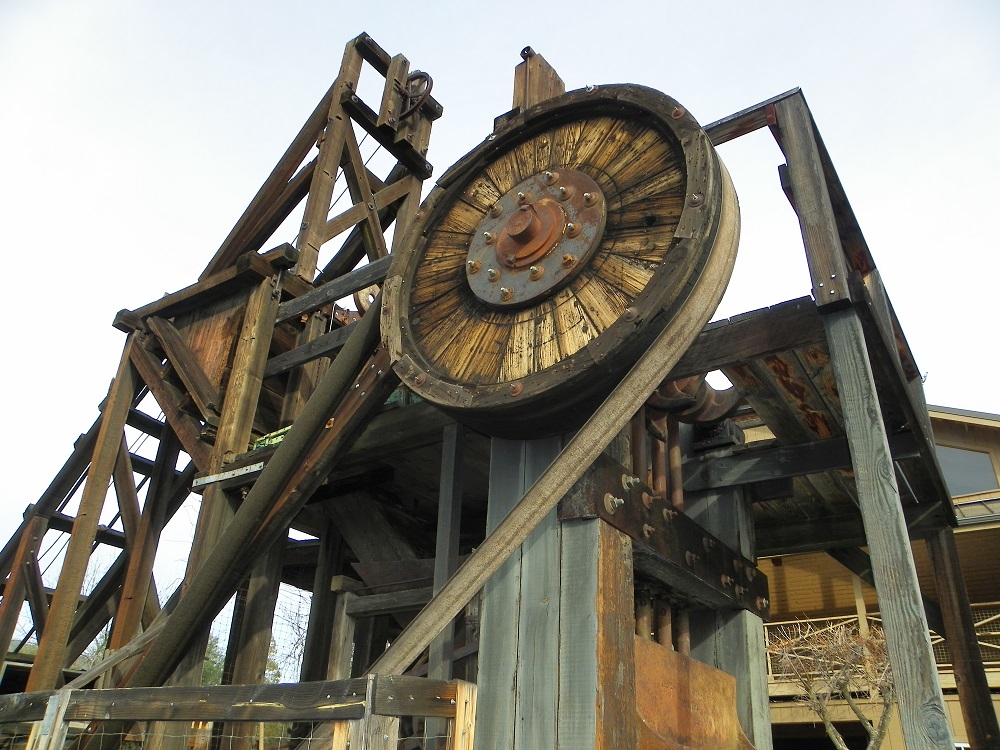 Craftsmanship and ingenuity were the order of the era, and it’s present in every piece, including the old-time Joshua Hendy 5 stamp mill, where 5,000 pounds of weights would pummel quartz rock to a fine paste, which was sluiced and processed for gold.
Craftsmanship and ingenuity were the order of the era, and it’s present in every piece, including the old-time Joshua Hendy 5 stamp mill, where 5,000 pounds of weights would pummel quartz rock to a fine paste, which was sluiced and processed for gold.
Leaving the museum grounds, our next stop was just across the street – the Gold Rush Trading Post – where we’d get our “grubstake.”
Grubstake is an old mining term that refers to tools, materials, food and other supplies that could be advanced to a prospector in exchange for the promise of a share in future profits. Tamara introduced me to Gold Rush Trading Post owner Fred Radonic. He’s an affable man who knows a great deal about gold and history, and I think Fred could easily have his own reality show – producers, take note.
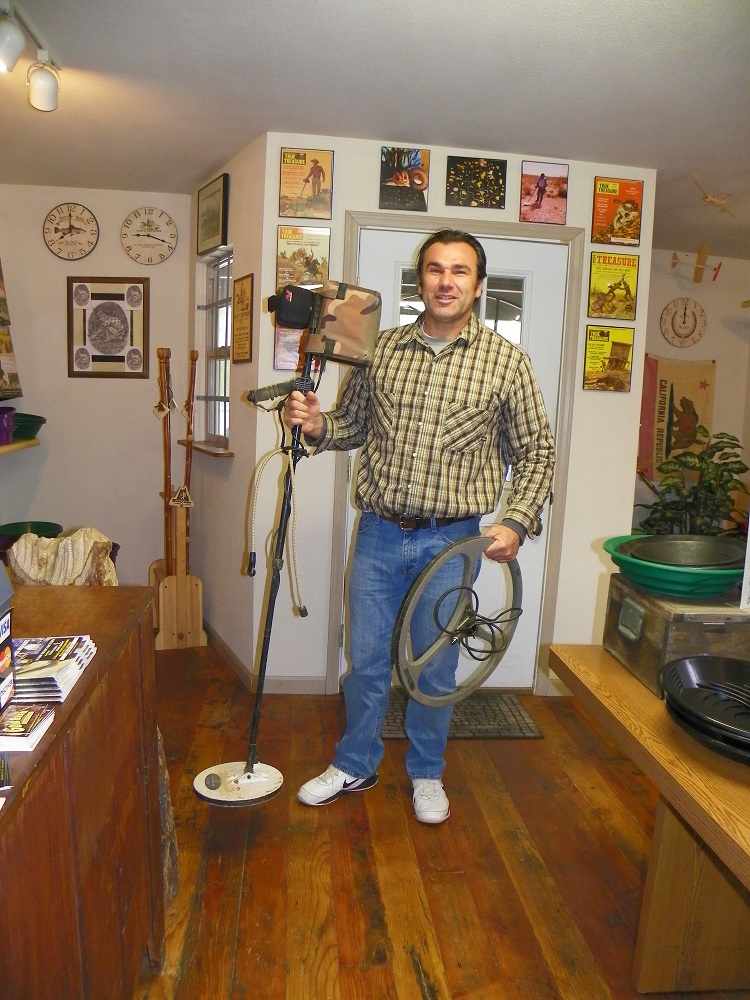 Fred’s prospecting partner Katherine Ogilvie would also be great in that TV show. Katherine is an owner of Wildwoods Craft Gifts, a family business that sells basket-weaving and pottery kits as educational crafts. Women like Katherine and Tamara, represent the growing demographic of females in mining and prospecting.
Fred’s prospecting partner Katherine Ogilvie would also be great in that TV show. Katherine is an owner of Wildwoods Craft Gifts, a family business that sells basket-weaving and pottery kits as educational crafts. Women like Katherine and Tamara, represent the growing demographic of females in mining and prospecting.
The allure of the west still lives in tales of the past, told by today’s generation of pick-wearing prospectors. Fred spun us some amazing stories of his finds using metal detectors. These have included items that paint a rough sketch of an individual’s end – Federal dragoon buttons from the Civil War, a rusted Derringer pistol, and what is thought to be the private love token of the soldier who may have died well over 150 years ago.
Pretty quickly I began to see that, while gold is astonishingly beautiful in its myriad shapes and manifestations, a huge part of the draw of looking for gold is the “looking” part, and what one finds along the way.
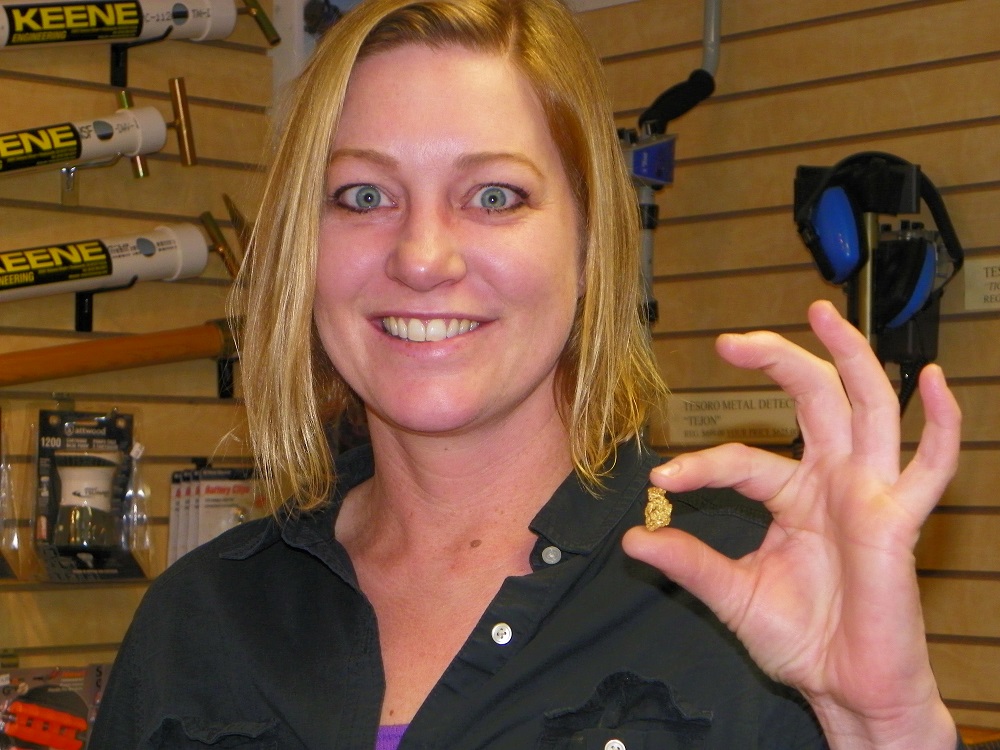 Fred gave us an excellent show and tell, discussing all the different kinds of gold, from crystalline with triangles, to flakes and leaf. Fred originally got into metal detecting as a kid in the Boy Scouts, and seems to have been immediately and permanently hooked. It’s a family sport, said Fred, in agreement that the face of mining is changing as the hobby/profession/obsession enjoys a growing renaissance.
Fred gave us an excellent show and tell, discussing all the different kinds of gold, from crystalline with triangles, to flakes and leaf. Fred originally got into metal detecting as a kid in the Boy Scouts, and seems to have been immediately and permanently hooked. It’s a family sport, said Fred, in agreement that the face of mining is changing as the hobby/profession/obsession enjoys a growing renaissance.
Both Fred and Katherine concurred that, regarding one’s search for the soft, sparkling stuff, “you just have to stick with it.” So we packed up our purchases – I spied some chards of Chinese pottery that had been ground smooth on the edges and made in to pendants, and Tamara picked up a new squirt-bottle device for mining tight spots – and we set forth again on Highway 49, this time headed for the Briceburg area to hunt for our pot of gold.
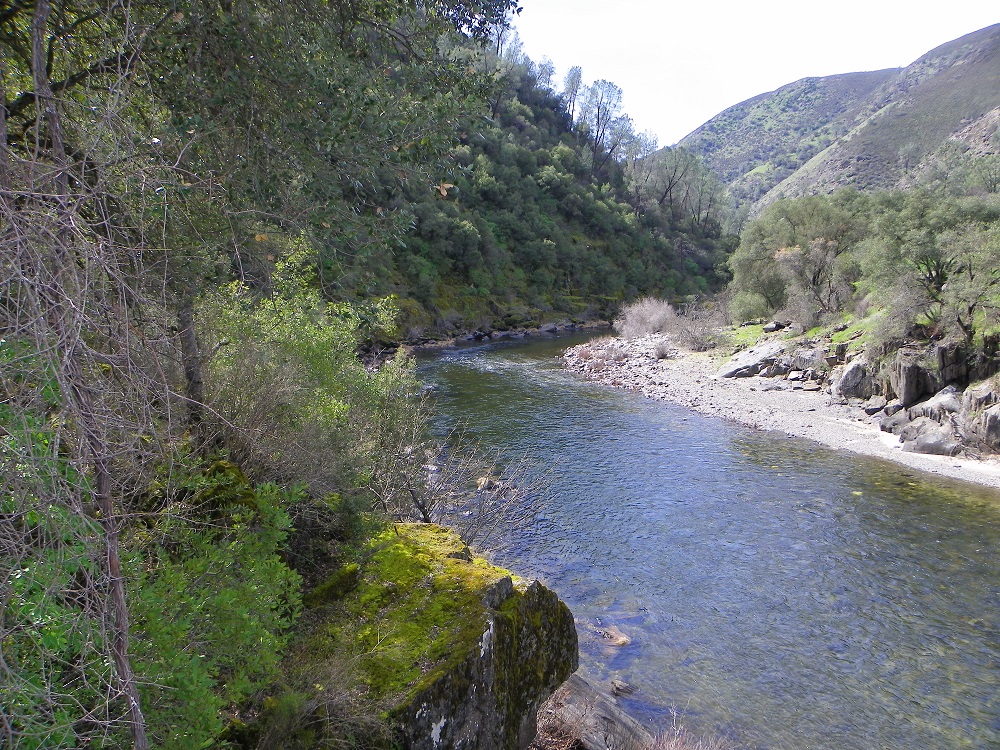 We could see the glorious geology change shape and texture as we drove up the highway. Tamara explained the differing colors and conditions that might indicate gold, and as we pulled up to the recreation area, signs of gold were all around.
We could see the glorious geology change shape and texture as we drove up the highway. Tamara explained the differing colors and conditions that might indicate gold, and as we pulled up to the recreation area, signs of gold were all around.
Beneath blue skies, the Merced River stretched before us, deceptively shallow but roiling underneath with a cold, powerful flow of water that could take you down in a heartbeat. We concentrated our efforts along the shoreline where another miner was already hard at work. The rules for mining preclude electric-powered machinery, so hand tools are the only sort allowed at the spot. Conscientious miners leave as little evidence of their presence as possible. Tamara remarked that the river is dotted with people and pans on the weekend.
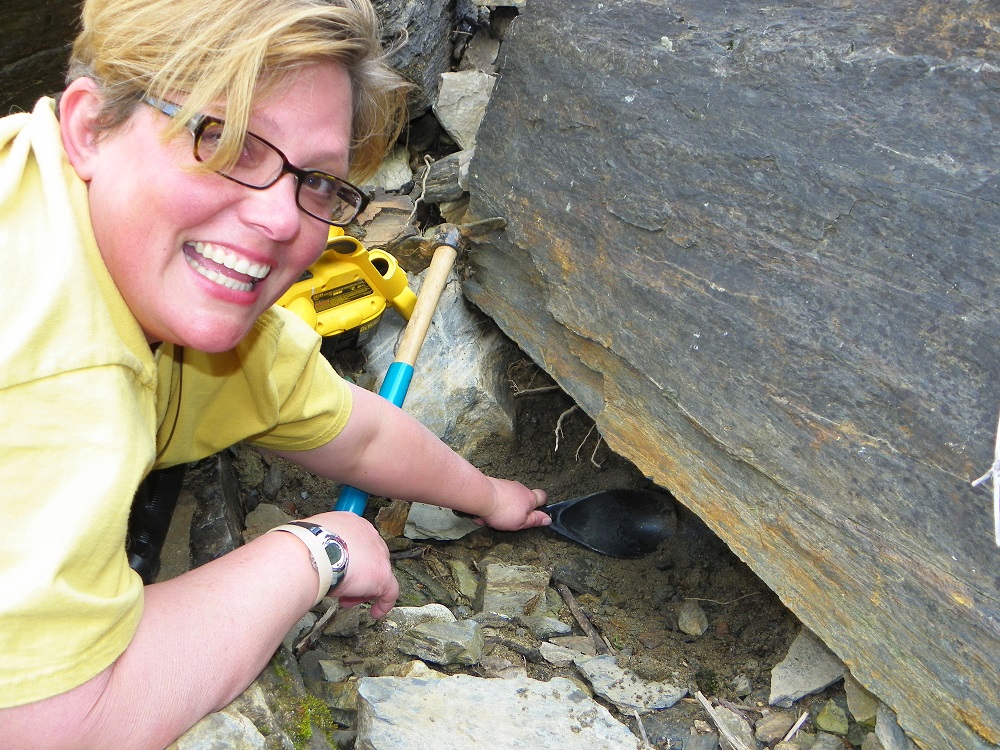 Panning for gold is the earliest method of recovering the precious metal, according to the museum back in Mariposa. Panning is simple, and the methodology hasn’t changed very much over hundreds of years. It’s obvious that a prospective prospector can spend oodles of dough on gear, including shovels, squirt bottles, picks, pans, battery operated vacuums, little glass specimen bottles to hold the gold you haven’t even found yet… and more. You could go that route, or you could just show up with a drugstore plastic gold pan and some sunscreen. Either way, you’d have a good time.
Panning for gold is the earliest method of recovering the precious metal, according to the museum back in Mariposa. Panning is simple, and the methodology hasn’t changed very much over hundreds of years. It’s obvious that a prospective prospector can spend oodles of dough on gear, including shovels, squirt bottles, picks, pans, battery operated vacuums, little glass specimen bottles to hold the gold you haven’t even found yet… and more. You could go that route, or you could just show up with a drugstore plastic gold pan and some sunscreen. Either way, you’d have a good time.
Tamara chooses the middle ground when it comes to equipment, opting for a moderate amount of essential gear, including a cool new kind of pan. Apparently, while the shape of the pan remains the same externally, the adage about building a better mousetrap does apply. An Australian geologist/prospector has designed the “Turbopan” which has riffles to more efficiently catch the gold.
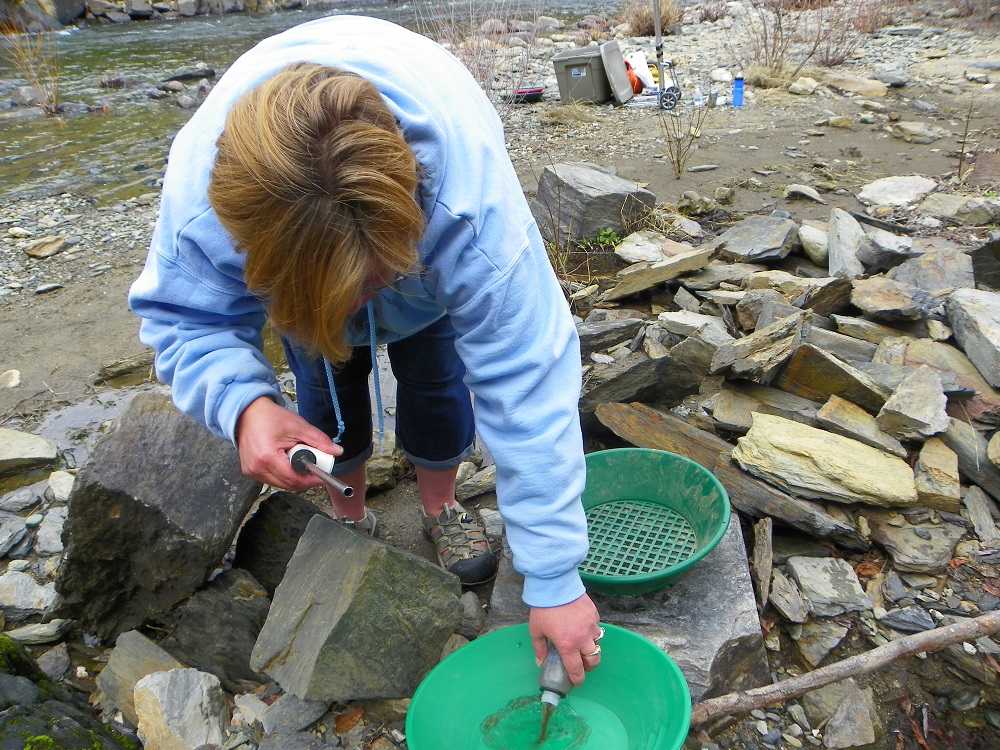 Prospecting is apparently a studied search for a promising place in which to search more vigorously. After not much effort, we picked a location along the Merced that featured some color in the rocks, and looked promising. We mined while crevassing under a good sized boulder. Tamara dug while I classified the material, shaking it down through sieves in order to throw out the larger rocks as we got closer to what we hoped would be a nugget of gold.
Prospecting is apparently a studied search for a promising place in which to search more vigorously. After not much effort, we picked a location along the Merced that featured some color in the rocks, and looked promising. We mined while crevassing under a good sized boulder. Tamara dug while I classified the material, shaking it down through sieves in order to throw out the larger rocks as we got closer to what we hoped would be a nugget of gold.
Once we were left with a sludgy pile without large rocks or pebbles, we stepped over to the river’s edge where we sat on a rock and I learned to swirl the water and sand repeatedly, draining and tipping just so, to eliminate the lighter materials and leave only the smallest essence of what we’d come to find.
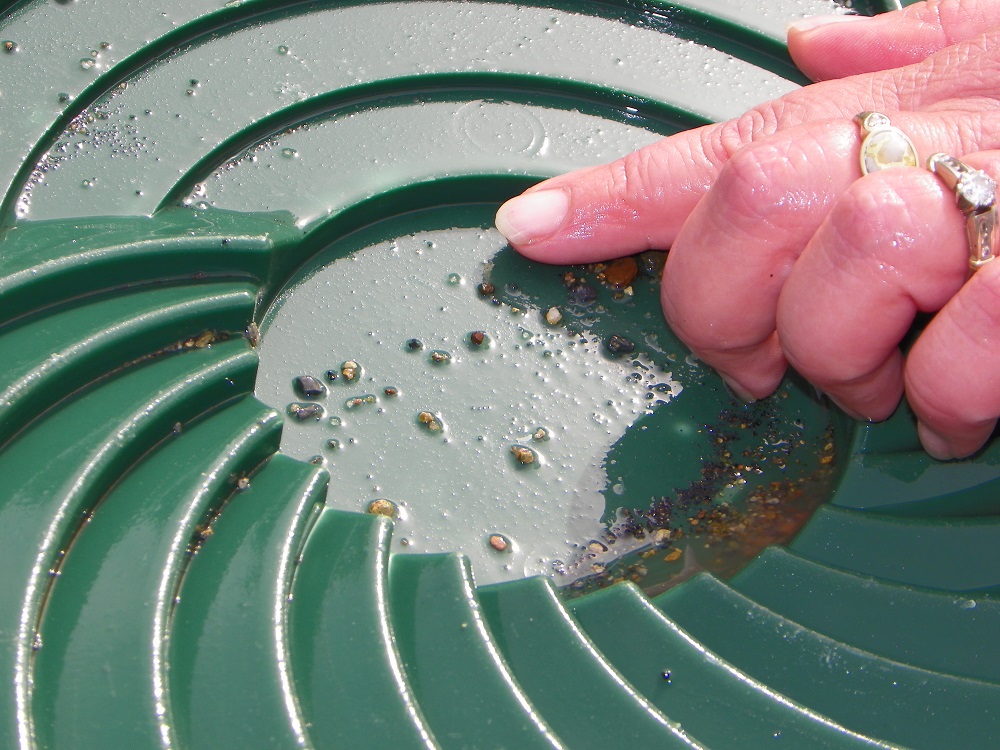 Tamara and I passed a couple of hours in this manner, with clouds drifting by and the river singing beside us. We squinted, imagining and then locating the tiniest specks of gold. Tamara showed me how to dry my finger and pick up the little flecks, popping them into a small glass vial where one would continue to accumulate minute fractions of gold until the bottle was full.
Tamara and I passed a couple of hours in this manner, with clouds drifting by and the river singing beside us. We squinted, imagining and then locating the tiniest specks of gold. Tamara showed me how to dry my finger and pick up the little flecks, popping them into a small glass vial where one would continue to accumulate minute fractions of gold until the bottle was full.
Holding the small container in the palm of my hand as the sun illuminated our practically microscopic twinkles of gold, I reflected on what Tamara had said about the experience of mining for gold: you find so many other treasures. By-products of the adventure are friendship and fellowship, the kiss of sun on your nose and how good it is to feel your hands again once you take them out of the almost-freezing river. I thought about how the madly rushing sound of water clears my head, and how lovely it is to smile, without effort.
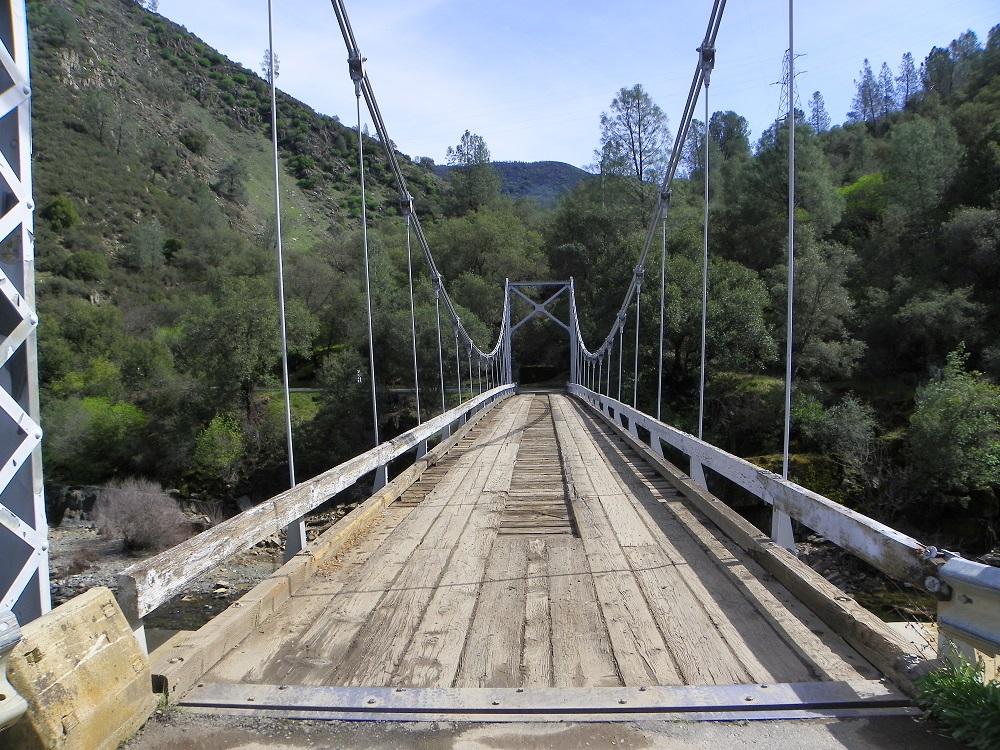
We checked out an old gold mine barely visible unless you know it’s there, took some silly pictures and then ventured across the suspension bridge built in 1937, laughing at its sway. Tamara pointed out the old route of the Yosemite Railroad. Then it was really time to go.
Driving home, I marveled at Tamara’s extensive knowledge, which seemed to flow much like the river. She said she’s really not much of a reader, but with a little YouTube and a lot of experience, she has found a family hobby that leads to profit far beyond the dollar value. Tamara again expressed the joy of talking with old-timers and the great friends she’s made, how her nuclear family is passionate about looking for gold together, even as her greater family of friendly gold-seekers grows.
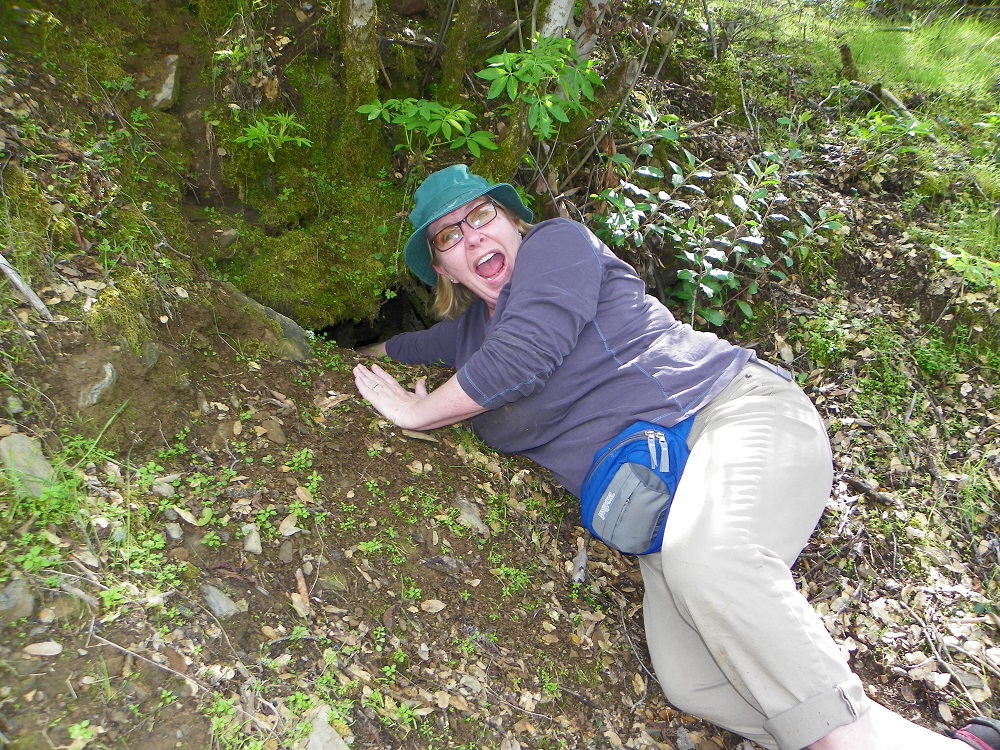 That night, as I unfurled my rolled up jeans and glittery sand fell out on the carpet, I smiled, thinking back on the day. One thing I would stake my claim on: there is for sure gold in these mountains, and you can find it in many ways and many forms. Eureka!
That night, as I unfurled my rolled up jeans and glittery sand fell out on the carpet, I smiled, thinking back on the day. One thing I would stake my claim on: there is for sure gold in these mountains, and you can find it in many ways and many forms. Eureka!
For more information on gold and prospecting supplies, contact Fred Radonic via Gold Rush Trading Post online. Katherine Ogilvie can be reached through Wildwoods Craft Kits online.
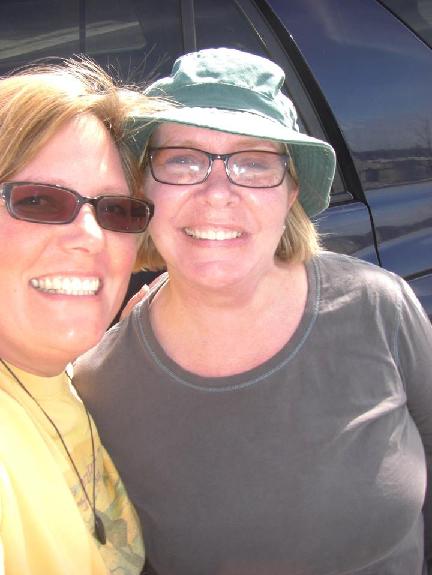
For your convenience, Tamara compiled the following list to help readers learn more about prospecting. Tamara recommends:
Gold Prospectors Association of America (GPAA), especially the Central Valley branch of the GPAA, along with Coarsegold Prospectors, Mariposa 49ers,and the Mariposa Gold Grubbers.
Mariposa Museum & History Center
Bureau of Land Management (BLM) Mining Claims
Note: Always check before you go to make sure the property you are on is public land open to mineral entry. You can do this by checking the BLM website by clicking on the link above for rules and regulations concerning mining and gold panning. Please do not trespass onto anyone’s private property.
